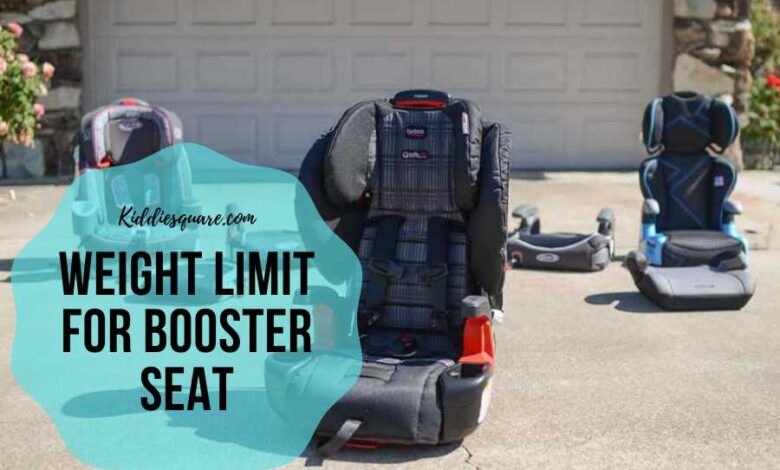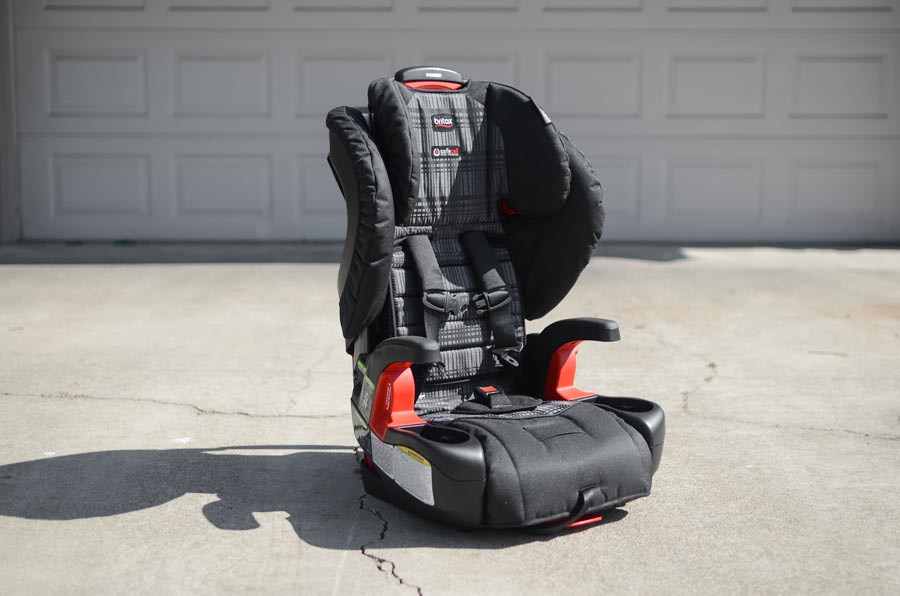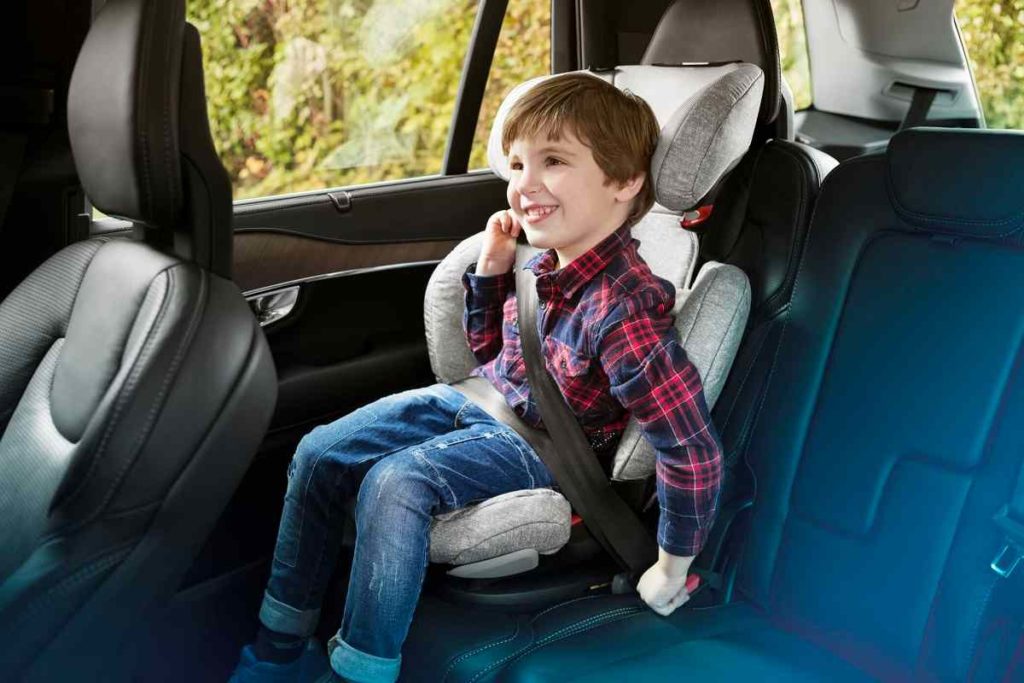What is the Weight Limit For Booster Seat?

Parent needs to know that there is a weight limit for every car seat – according to car seat laws or guidelines.
If I may ask – what is the weight limit for booster seat?
The weight limit for booster seat is typically between 100 -120 pounds, at this point your kid is ready to ride and fit properly wearing the car seat-belt. Owner’s manual will guide and let you know the weight limit for that particular booster seat you have, so read your manual always.
Don’t be in a worry to move your kid, keep children in a booster seat for as long as possible until they have reached the weight limit of their booster seat.
Before making any purchase parents should have the weight requirements for booster seats at the tip of their finger and also be able to ascertain when children should stop using their seats. The information will give a clear picture of how long a child can be able to use a booster seat.
The weight limit for booster seat could be confusing when a child has outweighed the preferred weight but not tall enough to move to use a car seat belt. Therefore, how then can parents know when a child is ready to ride on grownups’ seats? What’s the weight limit for booster seat? At what age, height and weight can a child move from a booster to use a seat belt? All these and many more are answered in this post.
Keep reading!
Table of Contents
When Can a Child use a Booster Seat?
For kids around 4-5 years, a booster seat is needed when they have outgrown a harnessed car seat but not adequately big for a grownup seatbelt. A booster seat boosts the child so that together the lap and the shoulder parts of the seatbelt passes in the right place around the child’s body. Since seat belts are built to accommodate grown adults, children need a booster to hold the seat belt correctly over their small bodies.
Booster Seat
Booster seats are used by children and Pre-Teens that have grown too big for the forward-facing car seats but do not yet fit into an adult seatbelt. When preschoolers outgrew their car seats, they need a booster seat to help them sit properly on the car seat so as to use the safety belt.
The height and weight requirements for booster seats are pegged at a minimum of 50 inches (127 cm) and 55 Ibs (24.947kg). And they should sit in the back of the car until they’re 13 years old.
Types of Booster Seats
According to the National Highway Traffic Safety Administration (NHTSA), children can only be transferred to a seat belt when they outgrow the height or weight limit for booster seat.
Height and weight requirement for booster seats are very important and differ from each manufacturer. Car seats are secured into a car and use their 5-point harness or safety belt. A booster seat, on the other hand, is not installed in the car and doesn’t have its safety belt. It is placed on the seat, and your child sits on it and buckles themselves in with the car’s seat belt.
Booster seats are available in two forms, High-back, and backless booster seats. The owner’s manual will help determine the best option for the age and size of your child and the particular specifications for your vehicle. When kids reach the weight limit for booster seat between 12-14 years they can comfortably move to an Adult seat and use the seat belt.
Here are the two (2) types of booster seats:
High Back Booster Seat

A high back booster seat comes with a backrest and a headrest. They are needed especially if your car has a low backrest or seats without head restraints. Children’s head and neck should be supported always.
Height and weight requirement for a high back Booster seat:
Weight requirement for High back booster seat: Children can use a high back booster seat when their harnessed car seat can no longer fit them, usually at 22.7kg to 29.5kg until they weigh 54kg pounds.
Height requirement for High back booster seat: Ranges from when children reach their car seat limits to at least four feet, nine inches tall. (4 ft 9 inc).
Backless Booster Seat

No-back or backless booster seats generally are used where your vehicle has a no headrest and so seat that fits the child comfortably.
Height and Weight requirement for a backless booster seat:
Weight requirements for Backless booster seat: From the moment children meet the weight requirement for a booster seat to the moment they fit the adult seat belt without the help of a booster.
Height requirements for Backless booster seat: Children will continue to use the booster seat until they are at least four feet, nine inches (4 ft 9 in), as per AAA recommendations.
The Weight Limit for Booster Seat

Children develop and grow at a different pace, so the weight limit for booster seat is relative and varies accordingly for different factors. Height and weight requirement for booster seats are not specifically definite, it is a rough average representation of figure to give you an idea of what is required for the safe ride of your children.
According to my assumption, the below table is a rough representation of the required age, height, and weight limit for booster seat which your child must attain before they can transcend the booster seat and move to use the adult seat belt.
In the table the I enumerated the weight limit for booster‘ seat between the boys and girls.
| WEIGHT | HEIGHT | AGE | |
| BOYS | 100.0 lb (45.3 kg) | 61.5″ (156.2 cm) | 13 Years |
| GIRLS | 101.0 lb (45.8 kg) | 61.7″ (156.7 cm) | 13 Years |
Different states and county have seat guidelines for parents and manufacturer that ensures a safe ride for the children. See full details.
Safety Tips for Booster Seat
Height and weight requirements for booster seats play a big rule in safeguarding your babies and ensuring their safety. The following safety tips are important in other for children to have a safe ride.
- Booster seat manual: Before buying a booster seat, read your car manual first – every car seat is peculiar. Therefore, you’ve got to read the manual to know for sure that you’re properly strapping your child in.
- Check the booster seat and adjust it every six months: monitoring, modifying or adjusting a booster seat shouldn’t be an everyday thing, but as your child gets older, there is a need to adjust the seat to protect the head and neck properly.
- Make sure that the belt lies over the lap and not across the tummy: During an accident, there are chances of severe damage to vital organs like; kidneys, liver, uterus, and lower spinal cord if the belt is around the stomach.
- Do not leave any vacant booster seat free in the back seats: The booster will fly right up to the front seat without a weight rightly on it when you least expect it! Therefore, the unused seat should be kept in the trunk or left at home.
Rapping up
Parents can allow their children to wear regular seat belt when they have met the weight limit for booster seat. Secondly, kids can ride with a seat belt when they can bend their knees over the edge of the seat and be able to rest their back against the seat. The shift from a booster seat to a seat belt happens when a child is between 12 -14 years old, 150 centimeters tall or weighs about 112.0 lb (50 kg).
For seatbelts to work properly, they must be worn correctly. Do not cross the lap belt around the stomach but let it fits comfortably across the thighs. You will find another belt called the shoulder strap, wrap it across the chest and shoulder. The strap becomes injurious or harmful when it is strapped across the neck, beneath a child’s arm, or behind the back.
Note! When your child cannot sit or wear the seatbelt correctly, let him/her remain on a booster seat.
[su_spoiler title=”Sources” open=”yes” style=”fancy” icon=”plus-circle”]
https://www.ghsa.org/state-laws/issues/child%20passenger%20safety
https://www.nhtsa.gov/sites/nhtsa.dot.gov/files/documents/carseat-recommendations-for-children-by-age-size.pdf
[/su_spoiler]






